
Young readers will explore the evolving terrain and animals of the Galápagos in this nonfiction picture book. Charles Darwin first visited the Galápagos Islands almost 200 years ago, only to discover a land filled with plants and animals that could not be found anywhere else on earth. How did they come to inhabit the island? How long will they remain? Thoroughly researched and filled with intricate and beautiful paintings by award-winning author and artist Jason Chin.
Island: A Story of the Galápagos
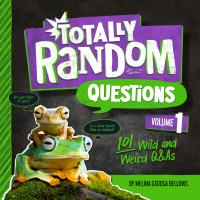
Ever wondered what the planet Mercury is made of or why cats purr? This first in a new series asks and answers 101 questions sure to intrigue and inspire further research, each presented with color photographs and a varied format.
Totally Random Questions Volume 1
![Cat Eyes and Dog Whistles: The [Five] Seven Senses of Humans and Other Animals](/sites/default/files/styles/book_cover_mobile_1x/public/book/cat-eyes-and-dog-whistles.jpeg?itok=Ca8obUfm)
Everyone knows their five senses — sight, smell, taste, touch, and hearing — right? But there are two more: proprioception (letting you touch your nose with your finger without seeing either body part) and the vestibular system (in charge of balance). Informal language and lighthearted illustration add a touch of humor in the presentation of solid information, sure to engage.
Cat Eyes and Dog Whistles: The [Five] Seven Senses of Humans and Other Animals
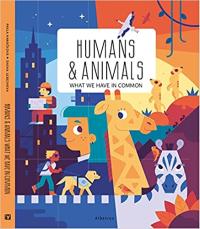
People and animals share many things: they play, move around, make homes, use tools and more. The more we know, the greater the respect we have for those with which we share the planet. Stylized, colorful illustrations and tidbits of information are presented in bitesize bits in a handsome format.
Humans and Animals: What We Have in Common
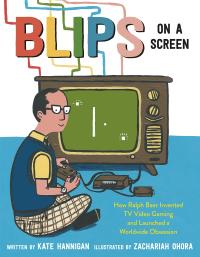
Have you ever wondered about video games, like what came before the Xbox? What inspired the hardworking German immigrant boy who invented them? Readable narration and childlike illustrations tell Ralph Baier’s story. Photographs concludes this playful, inspiring biography.
Blips on a Screen
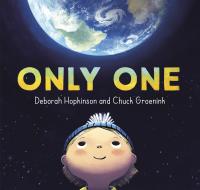
One. Only one. The story of our planet, our universe, our responsibility for earth’s treasures, begins, and ends with one. Follow a child as they go from small to universal then back again in this handsomely illustrated, empowering look at caring for our planet.
Only One
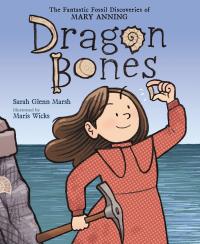
Mary loved rainy days because it was then that she would discover her treasures: fossils. Her life and work unfold in straightforward text and simple illustrations. Backmatter further details her life and what it takes to become a paleontologist.
Dragon Bones: The Fantastic Fossil Discoveries of Mary Anning

Rosa and her friends not only enjoy the rain, but they also study it! Simple experiments and childlike illustrations invite readers (and their grownups) to do the same as do others in the series (such as Rosa Explores Life Cycles (opens in a new window))
Rosa Explores the Water Cycle

Drip, a drop of water, travels over earth and air to introduce young readers to the water cycle. Simple illustrations with a die-cut add interest while complementing the simple text.
Drip

Courage, resilience, and perseverance — follow the struggles of Nobel Prize scientist Tu Youyou as she works to find a cure to malaria. Working in the 1970s, Chinese scientist Tu Youyou reviewed the traditional Chinese medicine (TCM) scrolls for ideas on where to start her research. She found 640 traditional treatments, and methodically started extracting compounds and testing them against malaria. Would any of them work?
Fever: How Tu Youyou Adapted Traditional Chinese Medicine to Find a Cure for Malaria

Join Michael, Emily, and their parents as they explore Yosemite (and other National Parks in the series). The kids quickly learn that there are animals all around — even if they can’t see them — who leave behind scat and tracks. Before long, the kids are able to identify animal tracks and determine what a creature has eaten recently.
Who Pooped in the Park? Yosemite National Park

Fiction and fact combine as a young beaked whale shares information about his pod, whales, and other aspects of marine biology as he talks to other ocean inhabitants. Backmatter includes additional source notes, a whale glossary, and a human impact glossary. Altogether, this is an unusual approach to a key environmental issue. (Part of the Science Comics series)
Whales: Diving into the Unknown

Readers of all ages are sure to find a topic to intrigue in one of the eight chapters in this large volume. From Whiz Kids to Game Changers, the information is presented in digestible portions perfect for browsing. The lighthearted tone is enhanced by many illustrations.
Listified!

Readers are invited to dip in, browse, or read from cover to cover! This authoritative, fully sourced, informative, and positively fun book is filled with facts, all generously illustrated.
Britannica First Big Book of Why
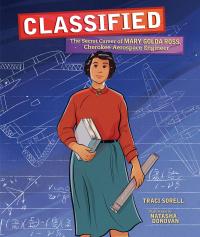
Mary Golda Ross designed classified airplanes and spacecraft as Lockheed Aircraft Corporation’s first female engineer. Find out how her passion for math and the Cherokee values she was raised with shaped her life and work. Cherokee author Traci Sorell and Métis illustrator Natasha Donovan trace Ross’s journey from being the only girl in a high school math class to becoming a teacher to pursuing an engineering degree, joining the top-secret Skunk Works division of Lockheed, and being a mentor for Native Americans and young women interested in engineering. The narrative highlights Cherokee values including education, working cooperatively, remaining humble, and helping ensure equal opportunity and education for all.
Classified: The Secret Career of Mary Golda Ross, Cherokee Aerospace Engineer

A friendly water droplet character guides children through topics ranging from melting and freezing to the ways in which water literally shapes the Earth. Tales by storytellers from around the world are sprinkled through the book, highlighting the variety of ways in which global cultures value water. The engaging format includes gatefolds and booklets with hands-on activity ideas for learning about and protecting water.
Water: A Deep Dive of Discovery
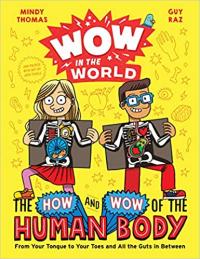
Slightly irreverent and quite comical but informative, this lighthearted look at the human body and its systems provides accessible material sure to engage young readers. Based on a podcast, QR codes are included in extensive backmatter that provide additional resources, a glossary, and source notes.
Wow in the World: The How and Wow of the Human Body: From Your Tongue to Your Toes and All the Guts in Between

Have you ever had one thought lead to another one that is seemingly unrelated? Open this unique book and readers will be able to follow trails from one thought to another, all playfully illustrated. Just right for browsing, the factoids contain nuggets to amaze and delight.
Factopia! Follow the Trail of 400 Facts

Mars continues to intrigue but photographs sent from a powerful camera known as HiRISE (High Resolution Imaging Science Experiment) has provided clues if not answers to many questions. Information and a lyrical text combine with astonishing, textured photographs for a look at the mysterious red planet for a book that can be read, viewed, and enjoyed in several ways.
Mars Is: Stark Slopes, Silvery Snow, and Startling Surprises

“A tree may seem like an ordinary thing. But hundreds of years ago, a tree was about to embark on an extraordinary journey.” Sir Isaac Newton sat under that tree and came up with the theory of gravity, a tree and an idea that have continued to inspire other scientists and people all over the world. Straightforward text and engaging illustrations present the Gravity Tree. Backmatter included.
The Gravity Tree: The True Story of a Tree That Inspired the World

Start at the beginning or jump into a topic that interests you! Whichever way you approach this handsome, fresh, and large volume, you will find fascinating information on a range of topics. As its reputation suggests, the venerable Britannica provides trustworthy information from cited authorities all in an engaging package.
Britannica All New Kids Encyclopedia: What We Know & What We Don’t

Starting small and familiar, children look into a telescope and the amazing comparisons begin. After glimpsing the cosmos, readers are brought back on earth with children viewing their place in the universe. Limited text and stunning illustrations progress to present enormous ideas of cosmic proportion in this memorable look at one’s place in the universe.
Your Place in the Universe

The child of immigrants, Jonas Salk helped develop the first flu vaccine in response to the devastating 1918 flu epidemic and went on to do again with the polio vaccine. This timely look at one man’s impact provides a glimpse at his life and the science of vaccines.
The Polio Pioneer

A family of mechanical parts greets its newest member, baby Flange. Intricate illustrations and a lot of humor (especially for savvy readers) reminds us that a new child is always a happy event.
